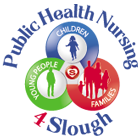UNDERSTANDING GRAMMAR
Grammar is a term used to describe how language is structured and organised.
For a child to understand language, they need to be able to make sense of a range of elements including:
- plurals e.g. cars
- pronouns e.g. he, she, they
- possessive pronouns e.g. his, her, their
- questions e.g. what?, where?
- tenses e.g. painted, painting, going to paint
PLURALS
To understand plurals.
Language: Plural ’s’ e.g. hats, balls, spoons
- Give simple instructions throughout the daily routine for example,
‘Can you put the chairs around the table ready for snack-time?’ ‘Can you bring me two books please?’ Can you bring the paintbrushes?’
- Singing rhymes, songs and finger-plays – e.g. ten green bottles, five little frogs
- Dressing up, getting changed/dressed – ask the child to put socks on, jumper on, so that they hear a range of plurals and singular nouns.
Language: Plural ‘es’ – e.g. buses, brushes, glasses, watches; Plural ‘ves’ – e.g. knives, leaves, scarves and Irregular plurals – e.g. mice, men, deer, sheep
- Model these plurals to children throughout everyday routines and activities.
PRONOUNS
Children often confuse pronouns when they are developing their language. Examples of pronouns include: me, I, you, he, she, mine, yours, they, them, we, us.
To respond appropriately to a simple request involving pronouns i.e. ‘I’, ‘he’, ‘she’, ‘they’
Language: I, he, she, they
- Have a circle of children where the adult says something about himself/herself, e.g. ‘I have black hair’, the next person in the circle is encouraged to say something about himself or herself ‘I have brown shoes’.
- Have a small circle of children. Give each child an object, the adult models ‘I have a car, he has a bear’. The child then says ‘I have a bear, she has a cup’ etc. You could extend this to having some pairs of children sitting together within the circle both holding the same object where the preceding child would say ‘I have a horse, they have some bears’.
- Have a boy and girl doll and a collection of objects in front of the child. Give the child an instruction e.g. ‘She wants a ball’ and encourage the child to give the object to the correct doll.
- Draw a boy and girl on a large piece of paper. Encourage the child to colour in items on the picture following simple instructions e.g. ‘He has red hair’, ‘They have green eyes.’
- Have a picnic with a boy and girl doll/other children. Describe what the children are eating/drinking. After the picnic, ask the child e.g. ‘What did he eat?’ ‘What did she drink?’ ‘Where did they sit?’
- Have a selection of photographs or pictures of boys and girls doing the same things. Ask the child to select the correct picture following a simple statement e.g. ‘They are running.’
To respond appropriately to a simple request involving possessive pronouns i.e. ‘his’, ‘her’, ‘their’.
Language: his; her; their
- Using a boy and girl doll, ask the child to ‘Wash his face’, ‘tickle her nose’, ‘point to their ears.’
- Draw around two children. Use cut out clothes or paints and ask the child to ‘paint her shoes’, ‘put his hat on’, ‘paint their hair’.
- With a small group of children, talk about what they are wearing, then ask simple questions e.g. ‘point to his shoes’, ‘where are their noses?’
- Have three cards showing a boy, a girl and a group of children. Using a range of pictures of objects or clothing, encourage the child to put the named item on the correct card e.g. ‘this is his coat.’
- Give a bag to a boy and a girl. Ask the child to put an object in the appropriate bag following a simple instruction e.g. ‘This is his ball.’
TENSES
To respond to simple questions involving tenses.
TOP TIP: Remember that the child’s use of verb tenses is related to the child’s awareness of the passing of time. Use the child’s personal experiences to develop this for example, ‘today you are painting the tree’, ‘yesterday you painted the house’ and ‘tomorrow you will do the sky’.
Language: painted, painting, going to paint
- Talk about the child’s routines using visual prompts e.g. what they are doing, what they have done and what they are going to do.
- Keep a daily diary with the child. Each day talk about what the child did yesterday and what they will do tomorrow.
- Comment on the child’s play e.g. during physical play when the child is standing on a box, ask them “Are you going to jump?” As they jump off, say “You’re jumping”, then comment “What did you do? – you jumped”.
- Read the child a story. Ask the child questions e.g. ‘What did the boy do?’
- When the child is engaged in an activity e.g. construction, painting, talk about what they are doing, what they have done and what they are going to do next.
JOINING WORDS
Language: and, because, but, so, or, if, until
To encourage the use of ‘and’ start with connecting nouns, e.g. bucket and spade. A simple pair association game or an opposite jigsaw will help to develop this stage.
When the child can cope with this basic level, you can introduce ‘and’ between phrases, e.g. ‘the boy is standing and the girl is swinging’.
Again take opportunities throughout the day to encourage development of joining words.

